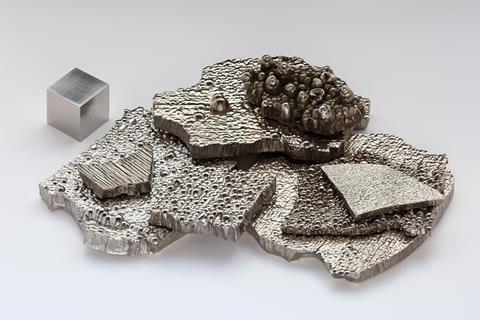Eindhoven researchers circumvent structure sensitivity of cobalt catalysts in CO2 hydrogenation by clustering cobalt atoms.

Transition metals on solid supports are important heterogeneous catalysts for industry. To make an efficient catalyst, the active metal phase must be easily accessible to the reactants. Thereby, high dispersion of the active metal phase over the support is one of the crucial factor. The problem is that many industrial catalysts suffer from structure dependence, where the catalytic activity drops if the metal particles become too small. This plays out, for example, in CO and CO2 hydrogenation on cobalt nanoparticles; reactions relevant to energy storage in chemical bonds.
The group of Emiel Hensen, professor of inorganic materials chemistry at TU Eindhoven, has developed a way around this problem. In Nature Catalysis, they describe how they use clusters of a few cobalt atoms, which they stabilize with cobalt oxide placed on a ceria-zirconia support, instead of the usual cobalt nanoparticles. Hensen: ’The trick is to not reduce all the cobalt oxide. By using a lower reduction temperature, we can make very small clusters where the contact area between metallic cobalt and cobalt oxide becomes much larger.’
The sites where cobalt and cobalt oxide come together turn out to be much more active for CO2 hydrogenation than larger particles. As a result, much less cobalt is needed to achieve the same activity. The results suggest that the reaction mechanism is changing and that formate is becoming more important as an intermediate. According to the researchers, their approach is relevant to the design of more efficient catalysts for other structure-dependent reactions. For example, catalysts with higher activity and selectivity for large-scale processes such as the Fischer-Tropsch process, methanol synthesis and ammonia synthesis.












Nog geen opmerkingen